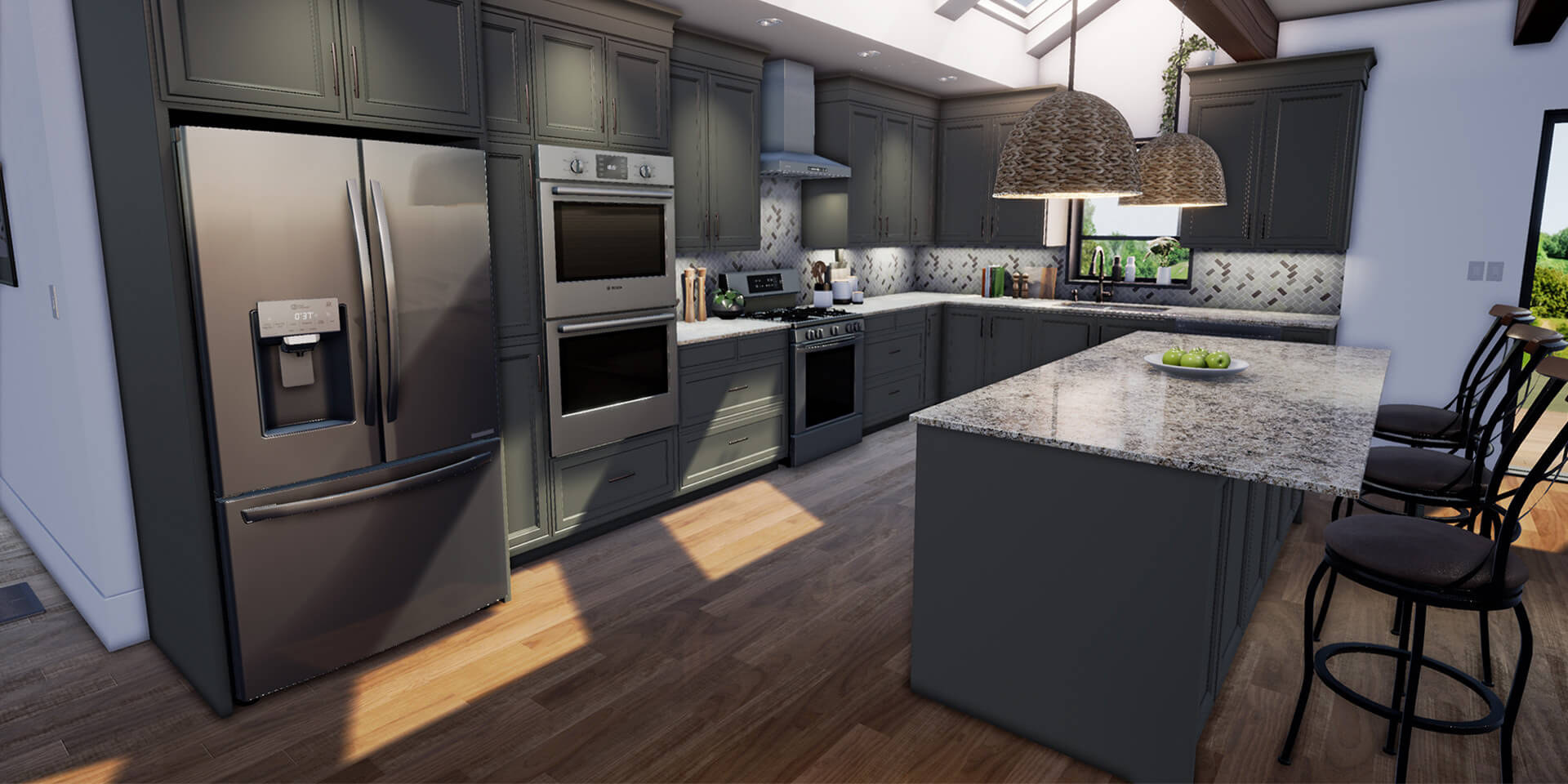Before diving into design choices to kitchen remodel, establish a realistic budget. Lowe’s offers a wide range of products and services, from budget-friendly options to high-end appliances. Consider factors like:
- Labor costs: Will you hire contractors, or will you DIY?
- Appliance costs: Research prices for new appliances (refrigerator, oven, dishwasher, microwave).
- Cabinetry costs: Explore options like stock, semi-custom, and custom cabinets.
- Countertop costs: Consider materials like granite, quartz, laminate, and butcher block.
- Flooring costs: Choose flooring that complements your style and budget (tile, hardwood, vinyl).
- Unexpected costs: Account for potential unforeseen expenses, such as plumbing or electrical issues.
Lowe’s offers various financing options to help spread out the cost of your remodel.
Design Your Dream Kitchen
Once you have a budget in mind, it’s time to start designing your dream kitchen.
- Consider your lifestyle: How do you use your kitchen? Do you entertain frequently? Do you enjoy cooking?
- Choose a style: Explore different design styles, such as modern, traditional, farmhouse, or contemporary.
- Create a layout: Determine the best layout for your space, considering factors like traffic flow and work zones.
- Select materials: Choose materials that are both functional and aesthetically pleasing.
- Don’t forget the details: Consider backsplashes, lighting, hardware, and other finishing touches.
Lowe’s offers a variety of design tools and resources to help you visualize your dream kitchen. You can use their online kitchen planner, consult with a design expert, or visit a local showroom for inspiration.
Choosing the Right Cabinets
Cabinets are a major investment in any kitchen remodel.
- Consider your storage needs: How much storage space do you need? Do you need specialized storage solutions, such as drawers for pots and pans or spice racks?
- Choose the right materials: Consider materials like wood, laminate, and thermofoil.
- Select the right style: Choose cabinet styles that complement your overall design aesthetic.
- Consider customization options: Explore options like custom sizes, finishes, and hardware.
Lowe’s offers a wide selection of cabinets in various styles, materials, and price points.
Selecting Countertops
Countertops are another important element in any kitchen remodel.
- Consider your lifestyle: Do you need a durable surface that can withstand heavy use?
- Choose the right materials: Explore options like granite, quartz, laminate, and butcher block.
- Consider the cost: Countertops can vary significantly in price.
- Think about maintenance: Some countertop materials require more maintenance than others.
Lowe’s offers a variety of countertop materials and installation services.
Choosing Appliances
Appliances are a key part of any kitchen remodel.
- Consider your needs and budget: Do you need high-end appliances with all the bells and whistles, or are you looking for more basic models?
- Research energy efficiency: Choose energy-efficient appliances to save money on your energy bills.
- Consider style and design: Choose appliances that complement your overall kitchen design.
- Don’t forget about ventilation: Make sure you have adequate ventilation for your cooking appliances.
Lowe’s offers a wide selection of appliances from top brands, including refrigerators, ovens, dishwashers, microwaves, and more.
Selecting Flooring
Flooring can make a big impact on the look and feel of your kitchen.
- Consider your lifestyle: Choose flooring that is durable, easy to clean, and comfortable to stand on.
- Explore different materials: Consider options like tile, hardwood, vinyl, and laminate.
- Think about style and design: Choose flooring that complements your overall kitchen design.
- Consider installation: Some flooring options are easier to install than others.
Lowe’s offers a variety of flooring options and installation services.
Lighting Your Kitchen
Proper lighting is essential in any kitchen.
- Consider task lighting: Install under-cabinet lighting to illuminate your work surfaces.
- Add ambient lighting: Use recessed lighting or pendant lights to provide overall illumination.
- Don’t forget accent lighting: Use track lighting or wall sconces to highlight architectural features or artwork.
- Consider natural light: Maximize natural light by installing large windows or skylights.
Lowe’s offers a wide selection of lighting fixtures and installation services.
Hiring Contractors
If you’re not planning to DIY your kitchen remodel, you’ll need to hire contractors.
- Get multiple quotes: Get quotes from several reputable contractors.
- Read reviews: Read online reviews of contractors before making your decision.
- Ask questions: Ask plenty of questions to make sure you understand the scope of work and the timeline for the project.
- Get everything in writing: Make sure you have a written contract that outlines the scope of work, the timeline for the project, and the payment schedule.
Lowe’s can connect you with qualified contractors for your kitchen remodel.
Staying on Budget
It’s important to stay on budget throughout your kitchen remodel.
- Track your expenses: Keep track of all your expenses throughout the project.
- Be flexible: Be prepared to make adjustments to your plans if necessary.
- Don’t be afraid to negotiate: Negotiate with contractors and suppliers for the best possible prices.
- Consider DIY options: Consider doing some of the work yourself to save money.
By following these tips, you




